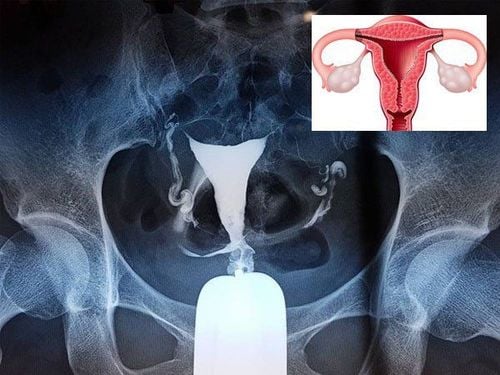The article was professionally consulted with Lê Nhất Nguyên, MSc, MD – Obstetrician, Department of Obstetrics and Gynecology, Vinmec Danang International Hospital.
Physiological vaginal discharge is normal, but various factors can cause pathological changes, referred to in medical terms as leukorrhea
1. How Do Leukorrhea and Vaginal Discharge Differ?
Under normal physiological conditions, plasma seeps through tiny capillaries, passes through lymphatic tissues in the vaginal wall, and mixes with mucus secreted by glands in the labia majora, labia minora, vestibule, uterus, urethra, and bladder.
This plasma combines with shed epithelial cells from the cervix and vagina, along with a small amount of lymphocytes and free cells, resulting in a milky white mucus resembling egg whites. It may have a slightly fishy odor or be odorless. These characteristics represent physiological vaginal discharge.
The properties and quantity of vaginal discharge depend on the estrogen levels in each woman’s body. For example, during childhood, when the reproductive system is underdeveloped and there is little hormonal activity, vaginal discharge is generally absent.
At puberty, as the ovaries develop, they stimulate the reproductive system to produce hormones, leading to the appearance of vaginal discharge. By adulthood, the ovaries fully mature and cyclically secrete estrogen and progesterone, causing the discharge to vary throughout the menstrual cycle. The amount of discharge depends on the levels of estrogen and progesterone.
During the menstrual cycle: As estrogen levels rise, the cervical glands secrete more mucus, increasing its water content. This results in the appearance of egg-white-like mucus that can stretch into threads, particularly 12–24 hours before ovulation. This increased secretion often causes women to feel moist around the vaginal area.

After ovulation, the level of the hormone progesterone increases, inhibiting the secretion of mucus in the cervix. At this time, vaginal discharge usually appears milky white, thicker, and stickier. Additionally, during pregnancy, heavy labor, or particularly when engaging in sexual activity, vaginal discharge may increase significantly, sometimes flowing out in noticeable amounts. Therefore, under normal physiological conditions, vaginal discharge may vary in quantity—sometimes more, sometimes less—and its properties may change slightly. In general, these variations are considered normal.
Apart from physiological vaginal discharge, certain microorganisms can cause pathological discharge, such as infections caused by yeast (Candida albicans), Trichomonas, or bacterial vaginosis. In these cases, the medical term used is "abnormal vaginal discharge," and its characteristics vary depending on the specific type of infection.
For instance, abnormal vaginal discharge caused by Candida albicans appears thick, white, and clumpy, sometimes accompanied by an unpleasant odor and itching in the vulva.
Abnormal discharge due to infection with Trichomonas vaginalis is yellow-green, watery, frothy, and produced in large quantities, often associated with itching and burning in the vulva.
Abnormal discharge caused by bacterial vaginosis, often due to anaerobic bacteria such as Gardnerella vaginalis or Mycoplasma, appears yellow or gray, watery, has a foul odor, and coats the vaginal walls.
Overall, vaginal discharge plays an extremely important role in the physiological health of women. It reflects hormonal conditions and overall health. Vaginal discharge not only maintains a certain level of moisture in the vaginal environment but also helps protect against bacterial invasion.

However, many factors can lead to pathological vaginal discharge, referred to as abnormal vaginal discharge, most of which are caused by infections. Therefore, if there are changes such as foul odor, unusual color, or abnormal quantity, it is essential to seek medical examination and treatment promptly.
2. Some common questions about vaginal discharge and abnormal vaginal discharge
Physiological vaginal discharge is odorless, transparent white, more abundant during ovulation, less so before menstruation, thicker and more opaque, and does not cause itching or discomfort.
Pathological vaginal discharge, or abnormal vaginal discharge, has a foul odor, is produced in large quantities, appears thick and white, and may clump like yogurt. In such cases, an examination and microscopic analysis of the discharge are recommended. The cause may be cervical ectropion.
Normal physiological vaginal discharge reflects the reproductive and gynecological health of women. If abnormal discharge occurs, characterized by unusual color, foul odor, or accompanied by symptoms like pain, itching, or discomfort, it is advisable to consult a specialist doctor promptly for diagnosis and treatment.
Please dial HOTLINE for more information or register for an appointment HERE. Download MyVinmec app to make appointments faster and to manage your bookings easily.














